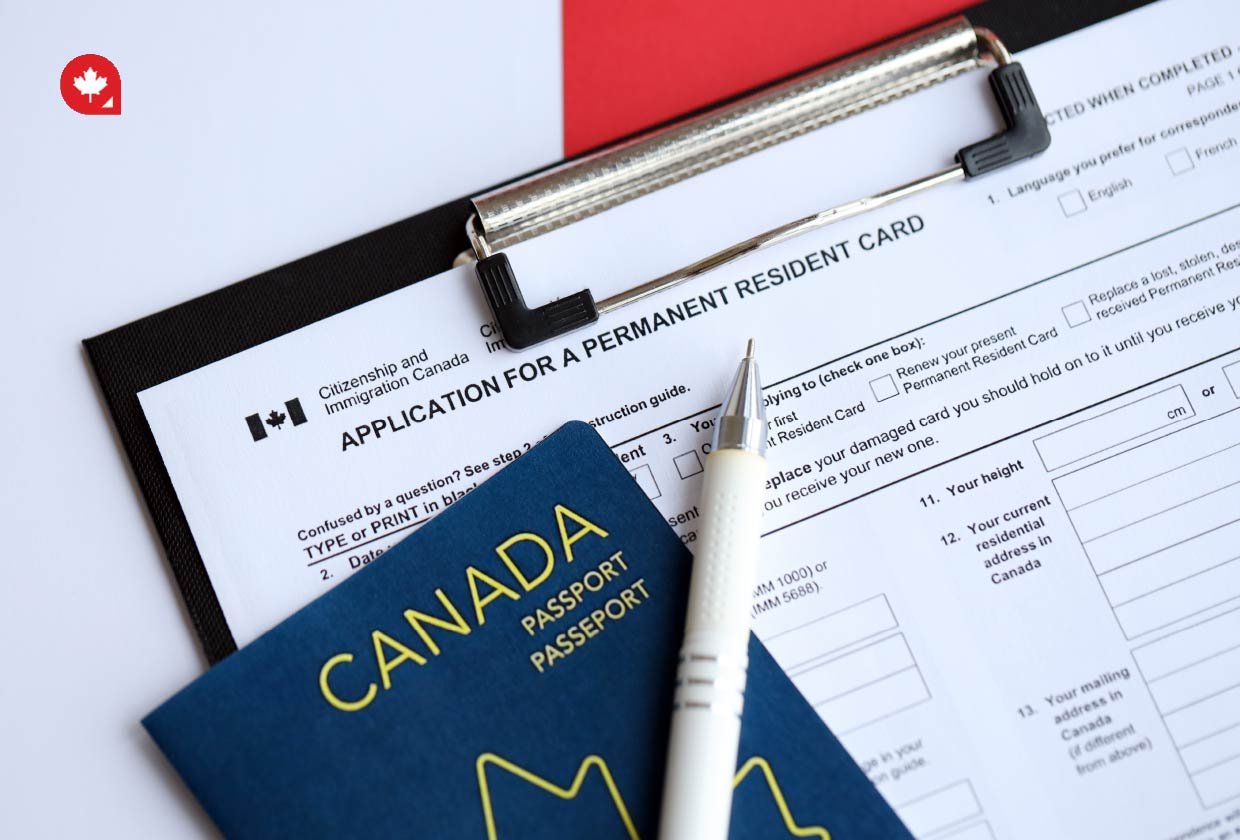Have you ever wondered what it takes to keep your Canadian dream alive once you immigrate to Canada? Obtaining permanent resident status in Canada is a significant milestone, but it's just the beginning of your journey. Working through the complexities of maintaining your PR status can feel like walking a tightrope. How long can you stay outside the country? What happens if you don't meet the residency requirements? These questions and more keep many permanent residents up at night.
But fear not! We've compiled a comprehensive guide to demystify maintaining your permanent resident status in Canada. We'll explore everything from residency obligations and travel considerations to the potential pitfalls that could jeopardize your status.
So, whether you're a new PR holder or have been in Canada for years, this post will equip you with the knowledge to manage your status confidently and continue building your life in the Great White North.
Understanding Permanent Resident Status in Canada

A permanent resident (PR) is someone who has been granted Canadian permanent status once they have immigrated to Canada but is not a Canadian citizen. PRs are typically citizens of other countries, although some may be stateless persons. It's important to note that individuals in Canada for a short time, such as students or foreign workers, are not considered PRs.
Permanent residents must carry and present their valid PR card or permanent resident travel document (PRTD) when traveling to Canada on any commercial carrier. This requirement is crucial for maintaining permanent resident status in Canada. If you don't have these documents, you may be unable to board your flight, train, bus, or boat to Canada.
Rights and Benefits of PRs
Permanent residents in Canada enjoy many of the same benefits as Canadian citizens. As a PR, you have the right to live, work, or study anywhere in Canada. You also receive most social benefits that Canadian citizens are entitled to, including a social insurance number for employment and health care coverage (though it's advisable to check your provincial website for specific details).
Permanent residents can apply for Canadian citizenship after meeting certain requirements. They are protected under Canadian law and the Canadian Charter of Rights and Freedoms, safeguarding their fundamental rights and freedoms.
It should be noted that with these rights come responsibilities. PRs must pay taxes and respect all Canadian federal, provincial, and municipal laws. This obligation is an essential part of maintaining permanent resident status in Canada.
Limitations for PRs
While permanent residents have many rights and benefits, their status has some limitations. PRs are not allowed to vote or run for political office in Canada. This restriction is one of the key differences between permanent residents and Canadian citizens.
Another limitation is that permanent residents cannot apply for specific jobs that would need a high-level security clearance. These positions are typically reserved for Canadian citizens due to their sensitive nature.
Understanding these aspects of permanent resident status is essential for anyone looking to immigrate to Canada or maintain their Canadian permanent residency. It's part of everything you need to know about maintaining permanent resident status in Canada, ensuring you can continue to live in Canada and enjoy the benefits of your PR status.
The Residency Obligation: Maintaining Your PR Status

Maintaining permanent resident status in Canada requires fulfilling specific residency obligations. These requirements ensure that permanent residents maintain a strong connection to Canada while allowing for some flexibility in their travel and work arrangements.
730-Day Rule
The cornerstone of maintaining permanent resident status in Canada is the 730-day rule. To keep your Canadian permanent residency, you must have been physically present in Canada for at least 730 days (2 years) within the past five years. This is a crucial aspect of everything you need to know about maintaining permanent resident status in Canada.
It's important to note that these 730 days don't need to be continuous. The IRCC assesses this requirement on a rolling basis. This means that at any given time, you should be able to show that you've met the residency obligation over the previous five-year period.
Calculating Your Time in Canada
When calculating your time in Canada, it's essential to understand that not all time spent outside the country counts against your residency obligation. In some cases, you may be able to count time spent abroad towards your 730 days. This flexibility is part of what you need to know to maintain permanent resident status in Canada.
For instance, if you work outside Canada, you may be able to count this time towards your residency requirement under certain conditions. To qualify, you must work full-time for a Canadian business or organization or for the Canadian federal, provincial, or territorial government.
Similarly, if you travel with a spouse or common-law partner who is a Canadian citizen or a permanent resident working full-time outside Canada for a Canadian business or the Canadian government, this time may count towards your residency obligation.
Exceptions to Physical Presence Requirement
There are some exceptions to the physical presence requirement that permanent residents should be aware of. These exceptions are designed to accommodate various life circumstances while still maintaining the integrity of the Canadian permanent residency program.
For example, if you are a dependent child traveling with a parent who is a Canadian citizen or a permanent resident working full-time outside Canada for a Canadian business or the government, this time may count towards your residency obligation. Understanding these exceptions is crucial as they form an integral part of everything you need to know about maintaining permanent resident status in Canada. They provide flexibility for permanent residents who may need to spend extended periods outside Canada for work or family reasons.
Remember, while these exceptions exist, it's always advisable to maintain strong ties with Canada and to document your time spent outside the country carefully. This documentation can be crucial if you need to demonstrate your compliance with the residency obligation when renewing your permanent resident card or when entering Canada.
Traveling as a Permanent Resident
Navigating international travel as a permanent resident of Canada requires careful planning and adherence to specific regulations. A valid Permanent Resident card is your essential passport to re-entry, while a Permanent Resident Travel Document (PRTD) offers a temporary solution for those without a valid card. Understanding the importance of these documents and the process of re-entering Canada is crucial for maintaining your Canadian permanent resident status and ensuring a seamless travel experience.
The Importance of a Valid PR Card
For permanent residents of Canada, a valid Canadian PR card is crucial when traveling abroad. This card serves as proof of your permanent resident status and is essential for re-entering Canada. It's your responsibility to ensure your PR card remains valid when you return from travel outside Canada. If your card expires, it's important to apply for a new one promptly.
Your PR card is more than just a piece of identification; it's your key to maintaining permanent resident status in Canada. When traveling by commercial carrier, such as an airplane, boat, train, or bus, you must present your valid PR card and your passport or refugee travel document. Without these documents, you may face difficulties boarding your transportation back to Canada.
Permanent Resident Travel Document
If you find yourself outside Canada without a valid PR card, don't panic. You may apply for a Permanent Resident Travel Document PRTD before you return to Canada by commercial vehicle. This document is specifically designed for permanent residents who are outside Canada and need proof of their status to return.
The PRTD is a temporary solution, primarily existing to assist Canadian permanent residents who either don't have a PR card yet or whose PR card has expired. It's important to note that while the PRTD allows you to re-enter Canada, it doesn't replace the need for a valid PR card for future travel.
Re-entering Canada
When re-entering Canada as a permanent resident, you must present your valid PR card or PRTD at the port of entry. This step is crucial in proving your status and your right to live in Canada. Immigration officers may ask questions to verify that you've met your residency obligations.
You can leave Canada for more than six months as long as you meet the residency requirements. However, waiting until you have your PR card before embarking on extended travel is recommended. Your PR card not only proves your residency in Canada but also acts as a photo ID at ports of entry.
If you're found to still need to meet the residency requirements when re-entering Canada, you may face challenges. The Immigration, Refugees, and Citizenship Canada (IRCC) officer might question your permanent resident status. In such cases, you may need to prove that you were in Canada for the required time, had an allowable reason for being outside Canada, or have humanitarian and compassionate reasons for your appeal.
Understanding these aspects of traveling as a permanent resident is crucial for maintaining your status and ensuring smooth re-entry into Canada. It's part of everything you need to know about maintaining permanent resident status in Canada, helping you navigate the complexities of Canadian immigration and residency requirements.
Losing and Renouncing Permanent Resident Status

Understanding the circumstances that can result in the loss of PR status and the available options for appeal and recourse is essential for navigating these complex situations. We investigate further.
Circumstances Leading to Loss of PR Status
Maintaining permanent resident status in Canada requires careful attention to residency obligations. While your PR status doesn't automatically end when your PR card expires, there are specific circumstances that can lead to its loss. An officer may determine you're no longer a permanent resident after an inquiry or PRTD appeal following a refusal. Additionally, a removal order coming into force against you can result in the loss of your PR status.
It's crucial to understand that even if you don't meet the residency obligation, you remain a permanent resident until an official decision is made on your status. This means that simply being outside Canada for an extended period doesn't automatically revoke your PR status. However, it may lead to questions about your compliance with residency requirements when you attempt to re-enter Canada or renew your PR card.
Voluntarily Giving Up PR Status
In some cases, you might decide that you no longer want to be a permanent resident of Canada. This process is known as voluntarily renouncing your PR status. You might consider this option if you haven't met your residency obligations by being outside of Canada for a long time or if you plan to visit Canada and want to avoid processing delays from a formal assessment of your PR status upon arrival.
If you choose to renounce your PR status, it's important to note that this decision is irreversible. You'll need to apply for permanent residence again if you wish to regain PR status in the future. The process of voluntarily giving up your PR status involves submitting a formal application to IRCC.
Appeals and Recourse Options
If you face the possibility of losing your permanent resident status, you have options for appeal and recourse. Issues regarding residency requirements come to IRCC's attention when you submit a PR card renewal application or when entering Canada through a port of entry.
If an IRCC officer finds that you haven't met the requirements, you may be found inadmissible and at risk of losing your permanent resident status. In such cases, you generally have the right to appeal the decision to the Immigration and Refugee Board of Canada's Immigration Appeal Division. This is known as a residency obligation appeal. During this process, you have three main options to support your case:
- Prove that you were in Canada for the required time.
- Demonstrate that you had an "allowable reason" for being outside of Canada.
- Show that there are humanitarian and compassionate reasons for your appeal, even if you didn't comply with your residency obligation.
The law makes exceptions for permanent residents who were outside Canada for five years for allowable reasons. These exceptions provide some flexibility for those who may have had legitimate reasons for extended absences from Canada.
FAQs
How Can I Track My Time Spent in Canada?
Whether you are a temporary or permanent resident, it's important to keep track of your travels outside of Canada, whether by air, land, or sea – even short trips to the United States. This information will be required when you apply for a new Permanent Resident card or Canadian citizenship.
A travel journal is a simple tool to help you log your trips. You can store it with your passport or travel documents. It's not an official document, and there's no need to share it with IRCC. It's just for your own records to help you remember your trips. You won't need to include it with your application.
Can Time Spent Outside Canada Count Towards My Permanent Resident Status?
Yes, it can, but only under specific conditions. Your time abroad may count if you're working full-time for a Canadian business or organization or for the Canadian government. It may also count if you're traveling with a spouse or common-law partner who is a Canadian citizen or permanent resident working abroad for a Canadian entity.




